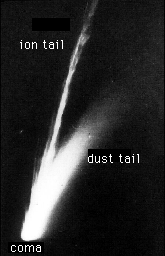This picture shows the two different tails of a comet - the dust tail and the ion tail.
Click on image for full size
JPL
The Comet Tail
A comet generally has two tails, not one. One tail is due to the comet's dust particles, the other is due to ionized gas from the comet
coma.
Dust particles form the first tail. This comet tail generally points back along the comet path (so if the comet is traveling right, the dust tail extends to the left).
Ions (electrically charged particles), which first come from the nucleus as (neutral) gaseous particles, are swept into the second comet tail. Because of the special interaction with the Sun's magnetic field, this tail always points directly away from the Sun.
You might also be interested in:
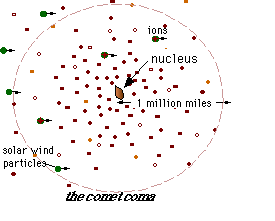
As the ices of the comet nucleus evaporate, they expand rapidly into a large cloud around the central part of the comet. This cloud, called the coma, is the atmosphere of the comet and can extend for millions
...more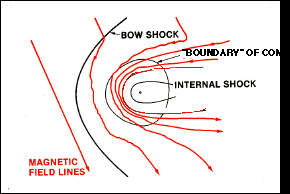
The magnetic field of the sun (the IMF) is distorted in passing over the comet, taking a long time to slip around the sizeable ion cloud which forms the comet coma. The stretched magnetic field lines form
...more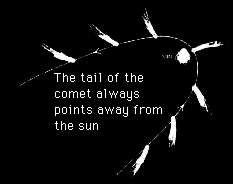
When comets are kicked out of the Oort Cloud, they begin a passage into the solar system, spinning and tumbling as they come. The trajectory which they acquire can be hyperbolic, parabolic, or elliptic
...more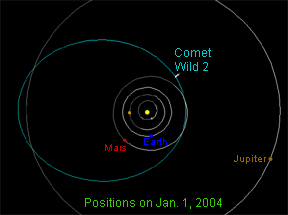
Comet Wild 2 is named after the scientist who discovered it. Paul Wild is an astronomer from Switzerland who discovered the comet in January 1978. Wild 2 is pronounced "Vilt 2". The comet orbits the Sun
...more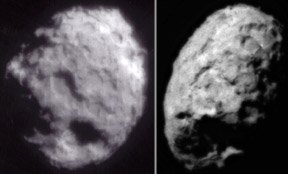
The picture on this page shows the best views ever of the nucleus of a comet. It shows two pictures of the comet's nucleus that were taken at slightly different times. The pictures were taken by a spacecraft
...more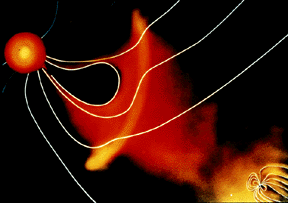
There is a giant magnetic "bubble" in space around the Sun. That "bubble" is called the heliosphere. In a sense, we Earthlings live within the outer atmosphere of our Sun. The solar
...more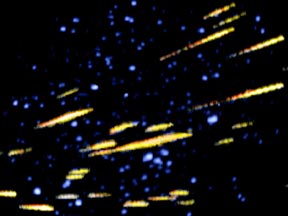
A meteor shower is an astronomical event during which many meteors can be seen in a short period of time. Most meteor showers have a peak activity period that lasts between several hours and a couple of
...more


